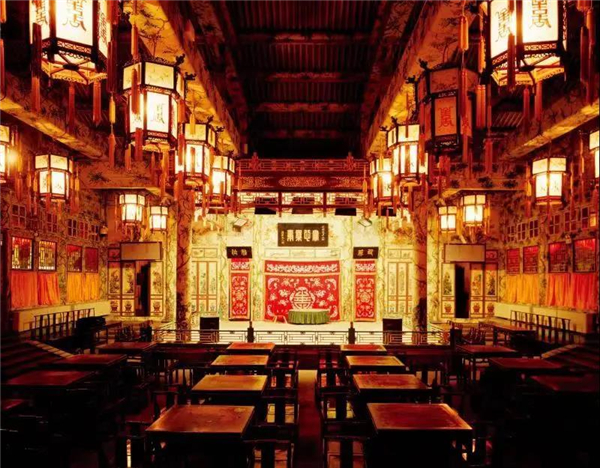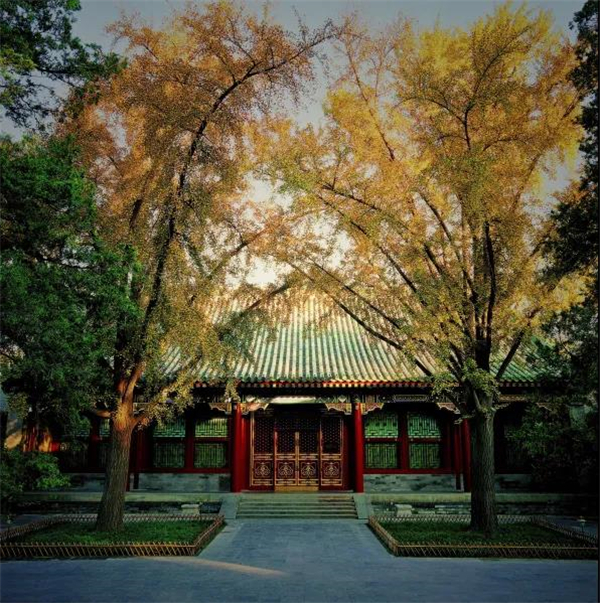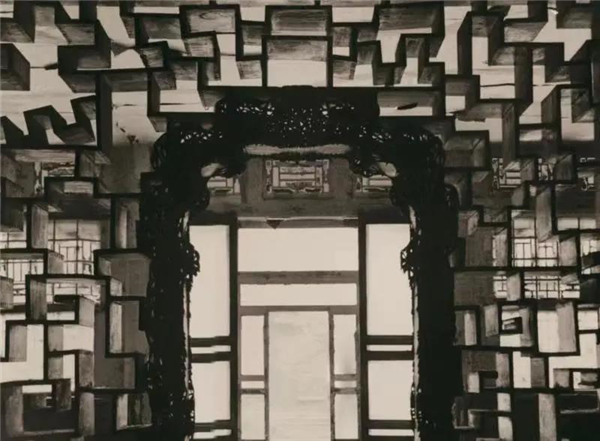
Spring Festival affairs after Laba Festival
From the eighth day to the 23rd day of the 12th lunar month, members of the prince’s residence would be busy with Spring Festival preparations, some of which needed to be completed on strict deadlines.
The first activity was hanging Spring Festival couplets on the 22nd day of the 12th lunar month. Before that day, couplets in the residence were pasted to long strips of wood and tidied. They were hung on a fixed position when needed. Apart from hanging the couplets, paintings of door gods were also indispensable, which were the same as those hung in ordinary families, but drawn more exquisitely. Door gods of civil servants with black gauze caps and official robes were hung at the halls, studios and pavilions. God of Blessings was in red and hung on the left and God of Wealth was in green and hung on the right.
The second ritual was hanging lanterns before noon on the 23rd day of the 12th lunar month. There were four types of lanterns. Horn lanterns were hung in halls, wall lamps on the wall, palace lanterns in chambers, and silk lanterns in garden pavilions and corridors. Horn lanterns and wall lamps should be hung before noon on the 23rd day of the 12th lunar month in order to add a festive atmosphere for the kitchen god sacrifice in the evening. Palace lanterns and silk lanterns were hung after cleaning houses.

Grand Theatre at the Prince Kung’s Palace
The third ritual was scrubbing utensils for sacrifice. After cleaning them, the utensils were counted. The administrators at the residence were responsible if there was a shortage of utensils.
A three-meter-high wooden frame would also be erected in the yard behind Yin’an Hall for setting off fireworks.
Setting off fireworks and sacrificing Mongolian gazelles
At dusk of the 23rd day of the 12th lunar month, sacrificing with Mongolia gazelle was highlighted. Servants would set tables at a chamber of the sacrifice hall. The offerings included stick-shaped candy (guandong tang), melon-shaped candy (tanggua), glutinous rice candy, sugar cake, longan, lychee, jujube, and chestnuts, as well as hay, water, scented candles, paper horses and a Mongolian gazelle that were placed in a large wooden trough behind the table.

Jiale Hall at the Prince Kung’s Palace
At 8 pm, as the fireworks were set off, a portrait of the kitchen god would be ignited, signifying sending off the god to heaven. The sacrificial ceremony ended when the fireworks and lights burned out.
About half an hour later, several eunuchs would retrieve boxes with various offerings and send them to different houses. All people, young and old, would eat some candy or fruit for good luck.
Cleaning house and hanging portraits at the end of the year
In ancient time, a saying in Beijing went that people should clean houses on the 24th day of the 12th lunar month. Cleaning houses before the Spring Festival was also a major activity in the prince’s residence and had to be completed before the 26th day of the 12th lunar month.
When completing spring cleaning, palace lanterns were hung and flowers were put on tables to create a festive vibe.

Interior decor at the Ledao Hall of the Prince Kung’s Palace (1937)
After cleaning the houses, portraits of ancestors in past dynasties were hung at the ancestral shrine in the residence. The portraits were life-sized and framed with satin.
Butterflies chase lanterns on Chinese New Year’s Eve
Finally, the time for Chinese New Year’s Eve would come. In the daytime, family members exchanged gifts. In the afternoon, masters of the residence granted food boxes to the family members to endow auspiciousness. An apple was put in the center of the box, to which a small gilded ruyi scepter was stuck, meaning ping’an ruyi (safety and best wishes).
Before lighting lanterns at dusk, servants held large bunches of sesame straw and scattered it as they wandered around the courtyard, which was called sasui. There was a crunching sound when people stepped on it, which was called caisui (treading the old year) to express good wishes for the following year. After that, lanterns in the residence would be lit up.
On Chinese New Year’s Eve, the prince would first pay a New Year's call to the imperial palace and then conduct a sacrificial ceremony at the ancestral shrine in the residence.
After that, at about 10 pm, the most important ceremony of paying a New Year call at the residence began. All people in the residence would get dressed according to their class, gather in the courtyard, stand in lines and kowtow to the elders. Meanwhile, one eunuch held a yellow box and the other eunuch uncovered the lid to let butterflies inside fly. Then, fireworks were set and people congratulated to each other. At last, they paid a New Year call according to status and seniority.
When the ceremony ended, reunion dinner was prepared. Drinks and delicious dishes were put on a square table. The biggest and most famous dish was the “First Class” hotpot dish. Eight-treasure rice pudding was also included. Over the meal, the juniors would give ruyi scepters to the elders, propose a toast and say auspicious words.